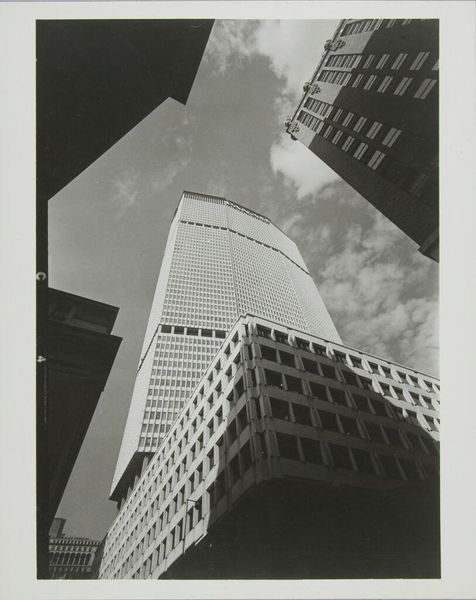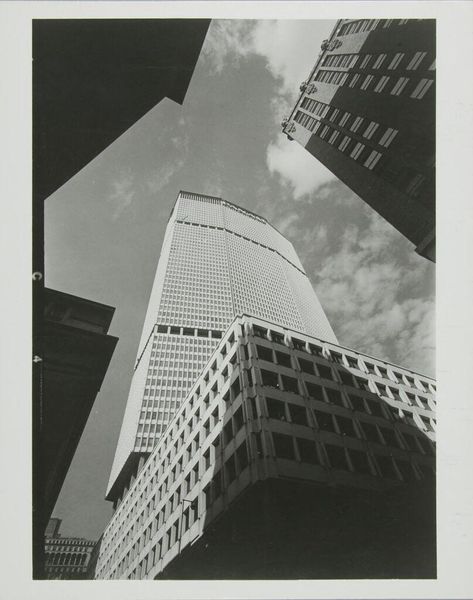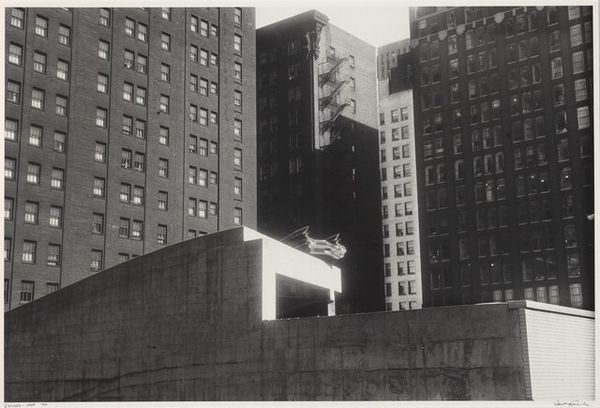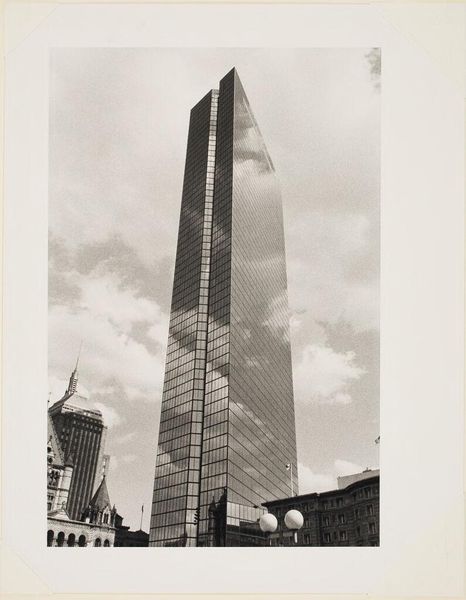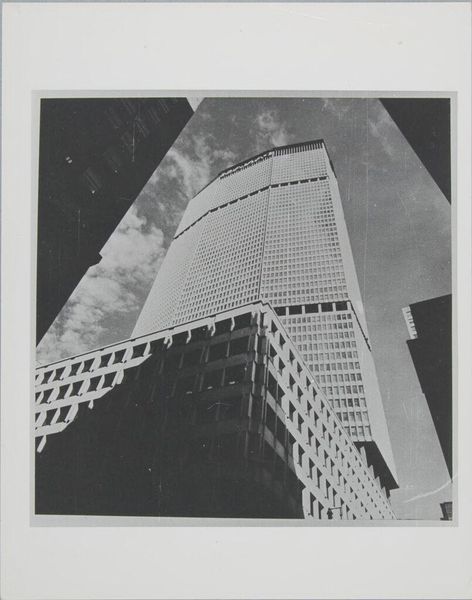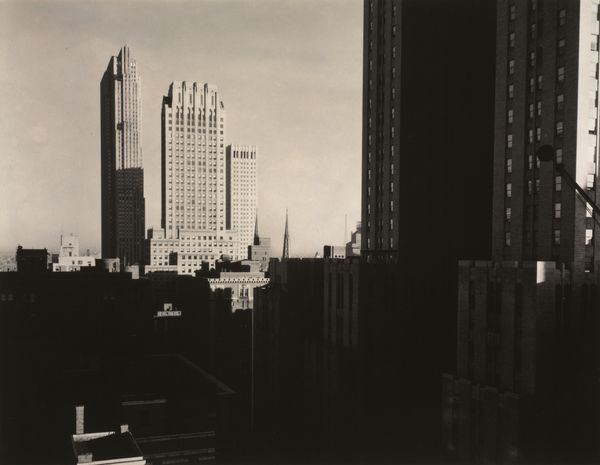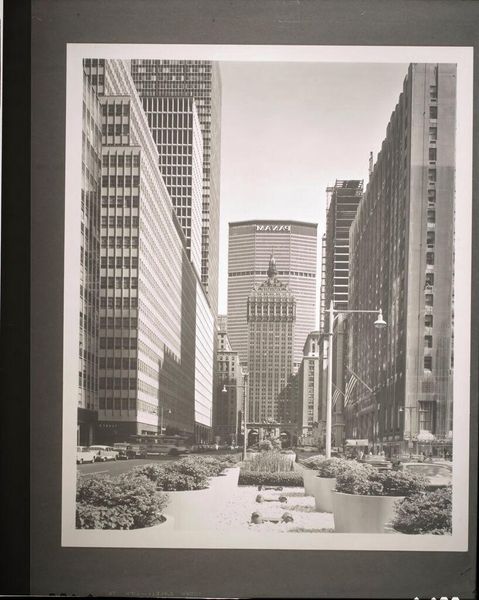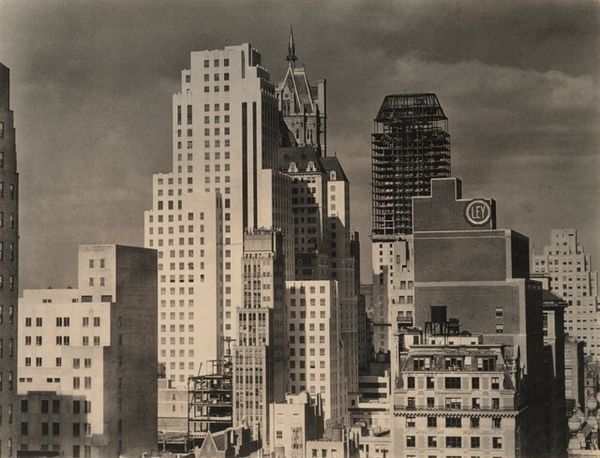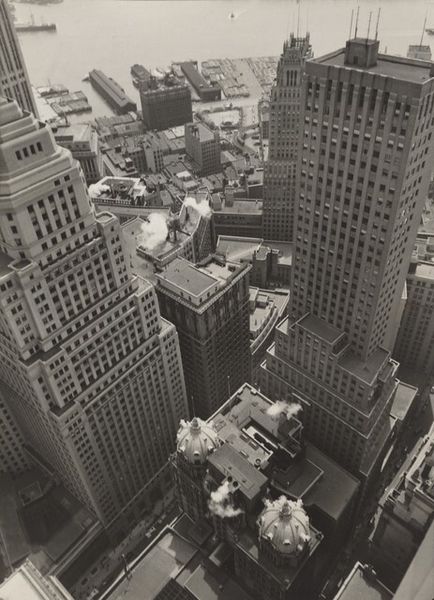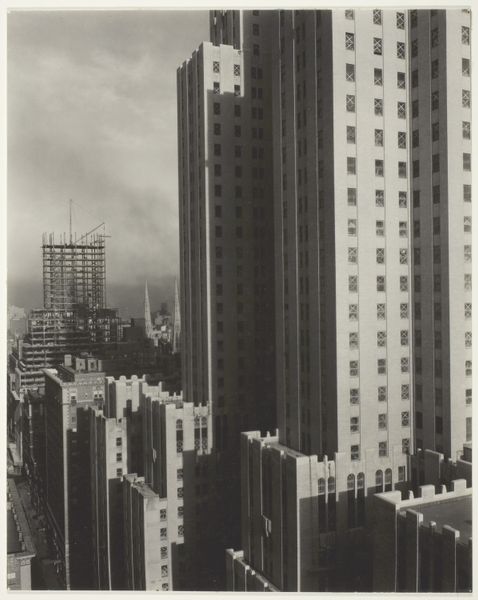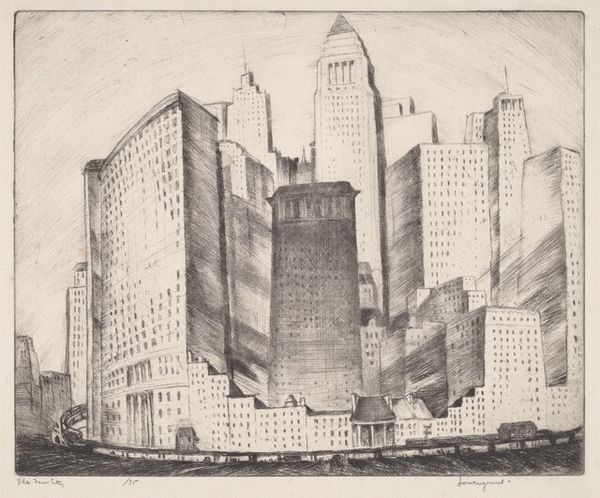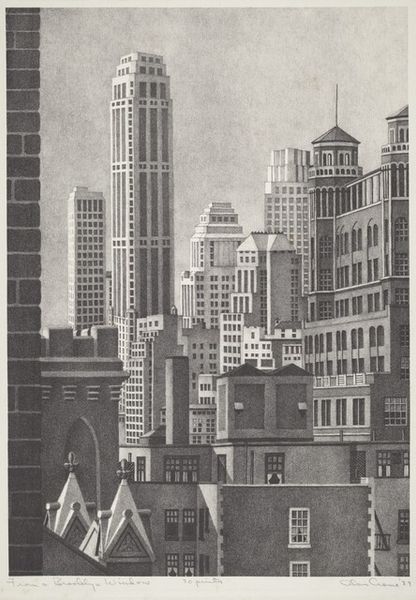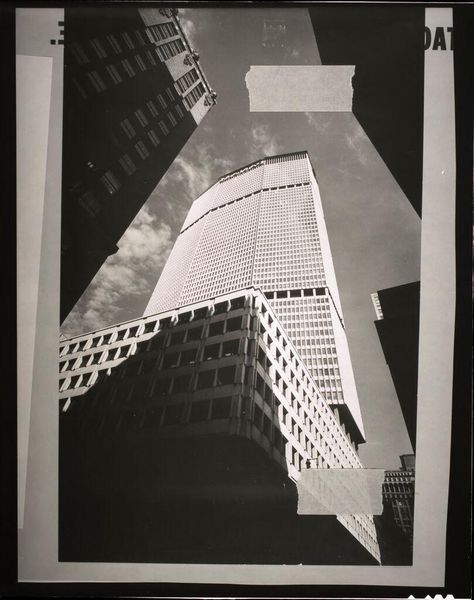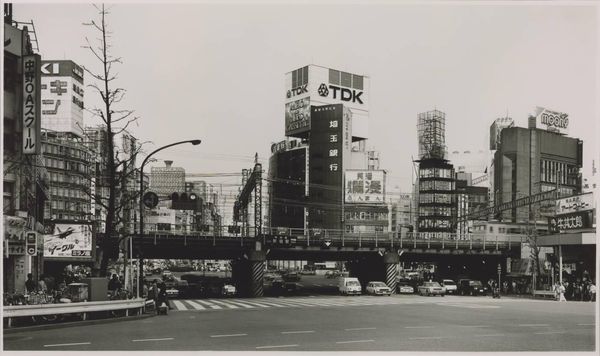
Dimensions: image: 421 x 584 mm
Copyright: © Thomas Struth | CC-BY-NC-ND 4.0 DEED, Photo: Tate
Curator: Thomas Struth captured this image, "Shinju-ku (Skyscrapers), Tokyo 1986" – it’s part of his series documenting urban landscapes. Editor: It feels so rigid, doesn't it? A symphony of right angles, like a city built from graph paper. Curator: Struth is often interested in the social dimensions of these urban spaces, particularly how the architecture shapes our experience. Editor: I guess. For me, the density is what's striking. You sense the sheer number of people within those walls, even without seeing them. Curator: Absolutely, and the black and white tones certainly contribute to that feeling of urban anonymity. Editor: It's like gazing into the future of urban life...or maybe the past? Still makes you wonder, doesn’t it? Curator: It does indeed, a fascinating document of our evolving relationship with urban environments. Editor: Yes, a photograph that leaves you contemplating the human impact on the skyline.
Comments
tate 7 months ago
⋮
http://www.tate.org.uk/art/artworks/struth-shinju-ku-skyscrapers-tokyo-1986-p77743
Join the conversation
Join millions of artists and users on Artera today and experience the ultimate creative platform.
tate 7 months ago
⋮
Thomas Struth began taking photographs of industrialised cities when he was studying under Bernd Becher (born 1931) at the Düsseldorf Academy in the late 1970s. He has continued to explore and develop the theme for almost twenty years, focusing his attention on such cities as New York, Tokyo, Berlin and Naples. Since the mid 1980s he has also produced landscapes, portraits and photographs of visitors in museums. Struth's images of the urban environment concentrate on seemingly unspectacular streets and public spaces. He seeks to record the face of urban space, seeing the architectural environment as a site where a community expresses its history and identity. In interviews he has stated that his images aim to explore what public spaces 'might say about the people who live in these sites.' (Quoted in Gisbourne p.5.) In recording the urban environment, Struth deliberately refers to the tradition of black and white documentary photography, adopting a seemingly objective position. The compositions are simple and the photographs are neither staged nor digitally manipulated in post-production. Struth has said: 'for me it is more interesting to try and find out something from the real than to throw something subjective in front of the audience.' (Quoted in Minelli p.190.) However, in spite of a link to the reportage tradition, Struth avoids both its snapshot approach and its quest for the capture of a fleeting, spontaneous image. Rather he carefully selects the sites where, using long exposures he makes sharply focused images. Shinju-ku (Skyscrapers), Tokyo 1986 explores the phenomenon of Japanese urbanisation. A group of ultramodern skyscrapers dominate the photograph. Struth has taken the photograph from the ground, adopting the viewpoint of a spectator looking up at the towering office blocks. The image contrasts the vast inhuman scale and sheer, impersonal surfaces of the buildings with the diminutive cars in the parking lot at the bottom of the photograph. However, Struth does not privilege one aspect of the photograph over another. Employing a large format camera, he is able to focus on all elements equally, capturing details with optimum clarity and precision. The windows at the top of the office blocks are given as much weight, and are as sharply focused and clear, as the cars and railings on the ground. There are a few tiny, almost imperceptible figures at the bottom of the image, yet as is the case with many of his other urban photographs, the focus is the architectural environment rather than human incident. Struth also avoids strong, dramatic contrasts of light and shade, preferring the slightly overcast, greyish light of early morning. This serves to enhance the neutral treatment of the scene. The towering Tokyo highrises could be anywhere in the developed world. There are few details in the photograph to help the spectator identify the buildings as Japanese. The image serves to highlight how the developments of global capitalism can lead to a negation of cultural specificity and local identity. In an unpublished Tate manuscript Struth has spoken of the striking contrasts in Tokyo, where modern structures have destroyed neighbourhoods of traditional wooden houses. He has also remarked how these changes are more advanced each time he visits Japan. In its silent, intense focus on the architectural environment at the expense of human incident, the photograph transforms the familiar, industrialised urban world into a subtly unfamiliar one. There are no hints as to how the image is to be interpreted and the spectator is thus invited to spend time with the image, to look and to question. As Struth has said, his work is intended to 'give pause', and thus resist immediate consumption. He seeks to bring about a 'move to investigative viewing' which is also a 'call to interact.' (Quoted in Buchloh p.31.) Further Reading: Mark Gisbourne, 'Struth', Art Monthly, no.176, May 1994, pp.3-9Giovanna Minelli, Another Objectivity, exhibition catalogue, Centre National des Arts Plastiques, Paris 1989, pp.189-194Benjamin Buchloh, Portraits: Thomas Struth, exhibition catalogue, Marian Goodman Gallery, New York 1990Thomas Struth: Photographs, exhibition catalogue, The Renaissance Society at the University of Chicago, Chicago 1990, reproduced p.29 Imogen Cornwall-JonesAugust 2001
